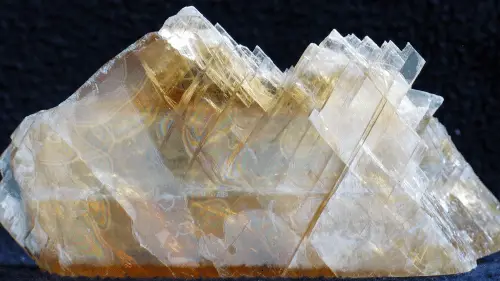Most of us don’t have particular terms for the way a rock breaks. However, geologists (scientists who study minerals, nature, and more) do have specific terms they use for the way in which a rock or mineral breaks. In fact, minerals are identified by the way the mineral shows fractures or cleavage.
Minerals are naturally occurring inorganic substances that can be found anywhere. They have distinctive properties that make them unique from one another. These properties also help us identify which types of mineral they are. One differentiating factor among certain minerals is the characteristic way they break when subjected to a certain amount of pressure or stress. Minerals can have what we call either a cleavage or a fracture upon breakage. This article will tell you more about this “breaking” property of minerals and how to tell them apart.
Summary Table
| Cleavage | Fracture |
| Breaking or splitting of minerals in crystallized shape | Breaking of a mineral in an irregular way, or chipping |
| Mostly full, smooth edges | Mostly jagged edges |
| Has almost none to very few rough surfaces | Has a lot of rough surfaces |
Definitions

Cleavage is the characteristic property of a mineral that is exhibited in how it splits easily along a flat surface. Whenever a mineral is subjected to stress, breaks off, and retains a crystal shape, then it has cleavage. Cleavage in a mineral is measured by its quality and the number of sides having the cleavage. A mineral can have a perfect, good, or poor cleavage depending on its smoothness and absence of any rough edges.
Cleavage is a break that occurs along a weak part of the mineral. There are five different types of cleavage, including:
- One directional: is a mineral that peels in layers after it’s broken.
- Two-directional: these are breaks that go in two different directions; however, they are joined by a right angle.
- Three-directional: these breaks go in three different directions, with the breaks at right angles to each other.
- Cubic: is cleavage where the mineral breaks into the shape of a cube, with four right angles.
- Octahedral: is a cleavage type where the mineral breaks into many “pyramids;” this type of break is the hardest to detect.
The number of cleavage surfaces are usually different from mineral to mineral. For instance, mica has one cleavage plane, while feldspar has two that intersect at a right angle.

Fracture is the characteristic way a mineral looks when it is subjected to stress and breaks off in an irregular way. All minerals can have fractures, but some just have more than others. A fracture can simply be described as the “chipping” of a mineral and this can happen in different ways depending on the shape or type of surface it exhibits.
There are two types of fractures:
Conchoidal: are fractures that make a round shape to the break—these are easy to see and more common in certain minerals.
Non-conchoidal: are breaks in random directions, which form different planes and swirls that go off from the original mineral. These are also common in specific types of minerals.
Cleavage vs Fracture
The main difference between cleavage and fracture is the characteristic manner in which a mineral breaks when subjected to any form of pressure or stress. A cleavage is the resulting smooth plane in a mineral as a crystal face breaks off to form a new crystalline face. A fracture, on the other hand, refers to that rough-edged, chipped shape of a mineral.
When minerals form a cleavage, they exhibit mostly full,smooth surfaces and very few rough edges. Conversely, fractures in a mineral will showcase mostly jagged edges and rough surfaces.
Cleavage can be measured by quality and the number of sides exhibiting that property. A perfect cleavage leaves no fragment and has a full, smooth edge without any rough surfaces. Good cleavage means that it cleaves well with some rough surface. Poor cleavage has a more dominant rough surface. Most minerals exhibit cleavage only on one side but some have different quality cleavage on different sides.
A mineral can also have different types of a fracture. One can be “conchoidal,” meaning it resembles a semicircular shell with a smooth, curved surface. Another is called an “uneven” fracture, which is one that has an irregular surface. Others are “hackly,” (resembles broken metal) “splintery,” (forms elongated splinters) and “earthy” (those what crumble when broken.)
All minerals have cleavage or fractures, such as mica, calcite, and halite—these are subject to cleavage, while quartz and obsidian are subject to fractures.






